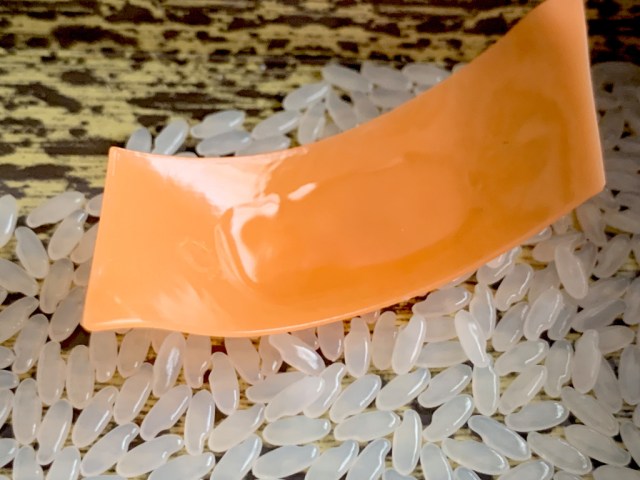
Every single grain of rice is its own individual piece.
A piece of sushi is pretty simple, as far as the ingredients go. It’s pretty much just rice and a slice of fish, or whatever other topping you’re putting on it.
So when our Japanese-language reporter Ayaka Idate found herself wanting to put together a plastic model for the first time in her life, she figured model maker Syuto’s sushi models would be an easy project for a beginner, and picked up a salmon kit and a tuna one too.
▼ They even come in packages that look like the old-school takeout boxes used by sushi restaurants in Japan.
Just like Ayaka had assumed, the assembly instructions are incredibly simple. They’re so simple, in fact, that Syuto doesn’t even include an instruction booklet or sheet, and just prints the three steps on the back of the box.
“I’ll be finished in no time,” thought Ayaka as she opened the box. With the lid removed, she could see that each kit came with two pieces for the fish…
…and under them…
…364 pieces of rice!
Yes, as we talked about back in the spring, each sushi model kit comes with 364 individual grains of plastic rice for you to form yourself as the base for your nigiri-style piece.
As with many model kids, the pieces come attached to a frame, and Ayaka started by using a pair of pliers to clip out the fish.
Then it was on to the rice, but she quickly ran into a problem: her pliers were too thick to cut the pieces out.
Even using a needle nose pair didn’t work, so in the end she popped them off by hand, one-by-one.
Unfortunately, this left some pieces with a bit of leftover plastic where they’d been attached to the frame, so Ayaka spent the next two hours trimming those unwanted bits off with her needle nose pliers.
At times during the ordeal, she began to doubt her sanity. “Am I being punished?” she thought, but she persevered, and when she was done, she had a pile of 728 pieces of rice.
Since the rice is going to form the base of the model, obviously you can’t leave them loose, and instead have to apply adhesive to them. At this point, though, Ayaka was exhausted, so she decided to take a break…for three months. She might never have got back to her model building project if she hadn’t gone to eat some actual sushi…
…and flipped over her tuna piece to admire all the rice underneath.
Newly determined to make her model look just as good as the real thing, Saya went back to work and started applying adhesive.
Using tweezers, she carefully applied adhesive to a grain, then placed it carefully on the underside of the curved fish piece.
There’s a certain tranquility to the delicate repeated motion, but if you’re in a rush, once you’ve got a layer or two of rice in place you can lay down some adhesive on top of it and pour on more than one one grain at a time.
This does run the risk of giving you an inelegant, uneven block of rice, though, so you don’t want to go too fast. You’ll also want to add in a little more rice in specific spots if the pile starts to clump and leave empty pockets elsewhere.
In total, forming the rice for the tuna took about 90 minutes, but when it was done, it looked great!
With the benefit of experience, Ayaka made quicker progress with the salmon, forming its rice in less than an hour.
For an additional artistic flourish and extra realism, Ayaka took out a white marker to draw in lines to replicate the marbling on a slice of fish.
This turned out to be trickier than she’d expected, though, since the lines she drew seemed to be starkly defined and artificial. This turned out to be not a mistake, though, but a necessary part of the process. By applying some enamel paint thinner and then making corrections, the lines took on a less distinct and more organic appearance.
Satisfied with how the pieces looked, Ayaka applied a clear topcoat, which also gave them a glossy luster like freshly sliced sashimi.
Then it was on to the final step of using adhesive to stack the two fish slices…
…and the sushi models were done!
While she was snapping photos, Ayaka decided to do a side-by-side comparison with some real sushi too.
In the end, Ayaka’s not sure if she’d recommend Syuto’s sushi models for an absolute beginner like herself. Yes, the basic assembly is pretty simple, but 364 pieces of rice are a lot to deal with.
On the other hand, though, there was an undeniable thrill as she put the last grain in place, and she now has two delicious-looking pieces of sushi that she can admire anytime she wants, which is a special and unique luxury considering how quickly we usually gobble up any sushi we have in front of us.
Photos ©SoraNews24
● Want to hear about SoraNews24’s latest articles as soon as they’re published? Follow us on Facebook and Twitter!
[ Read in Japanese ]

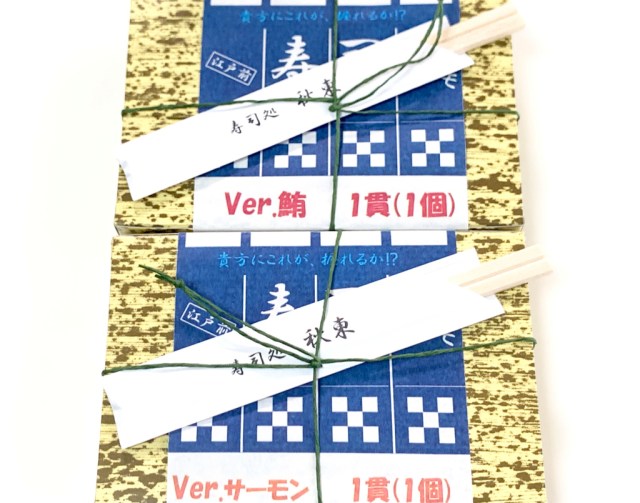
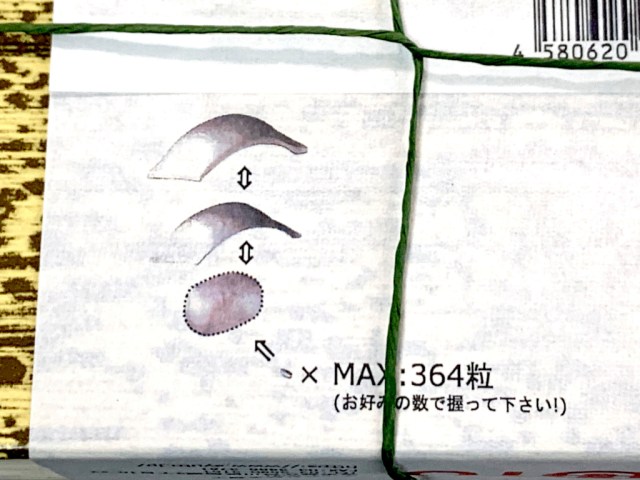
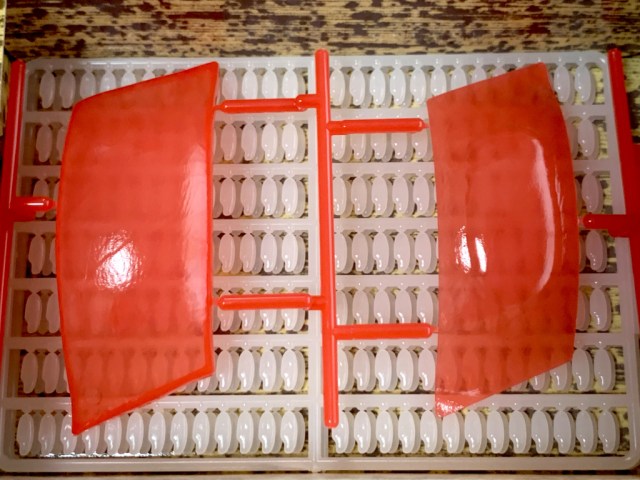
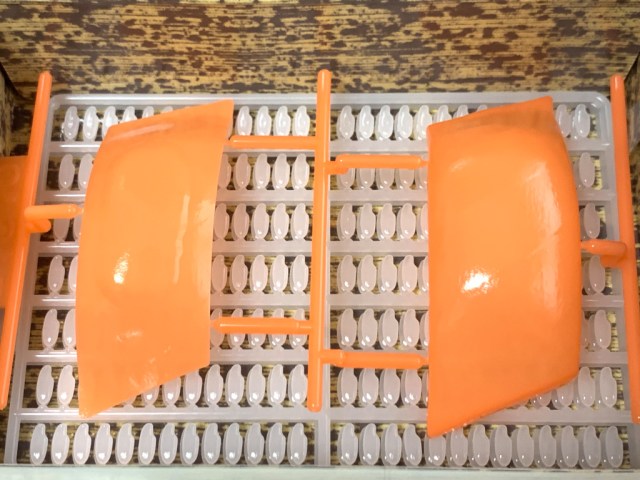

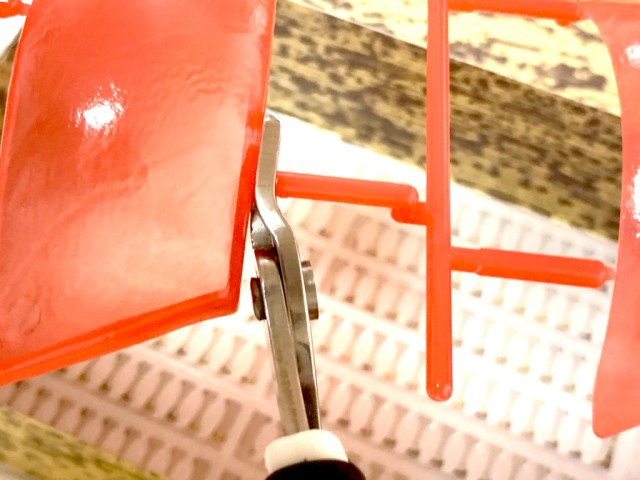

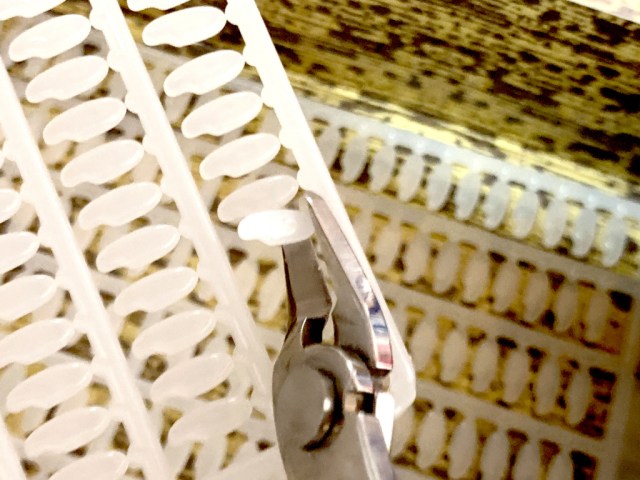
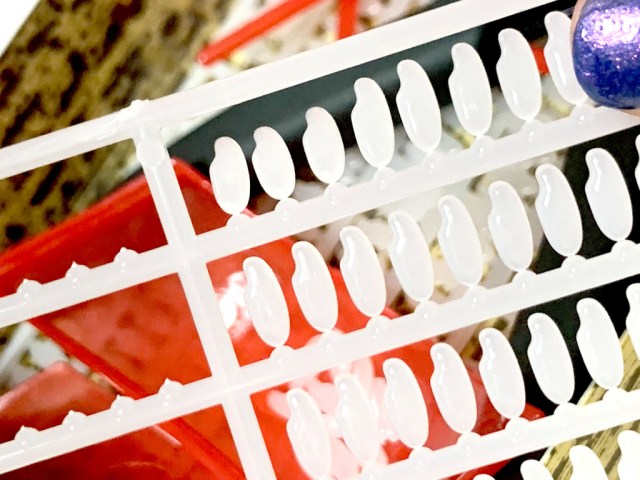
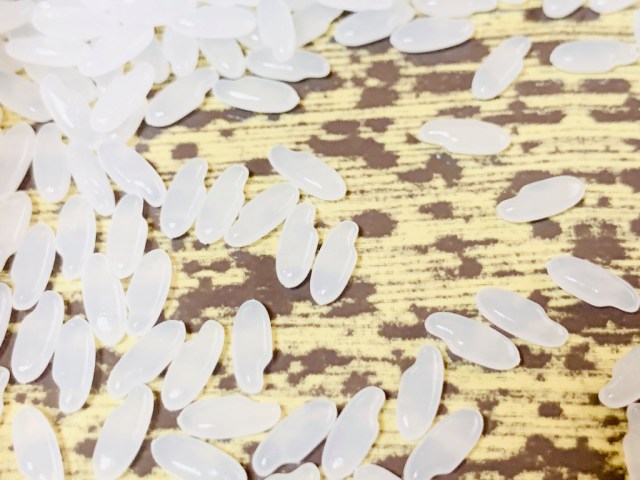
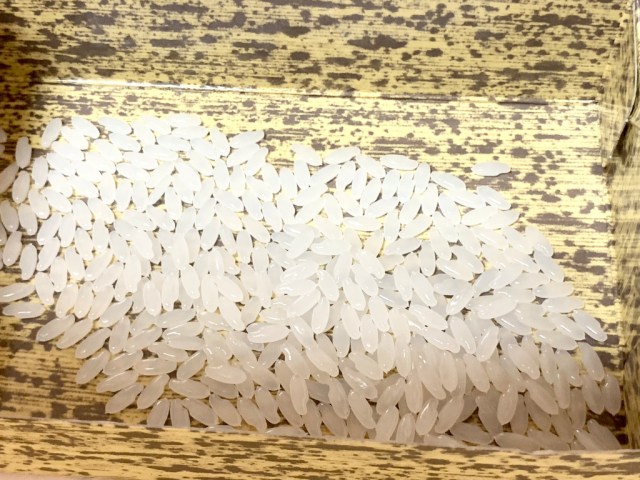
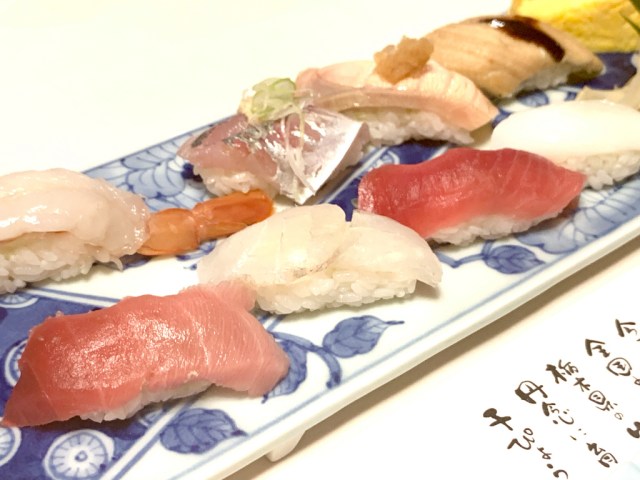
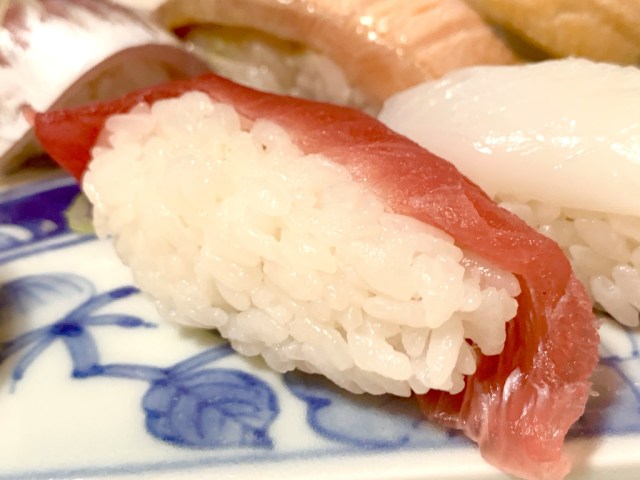
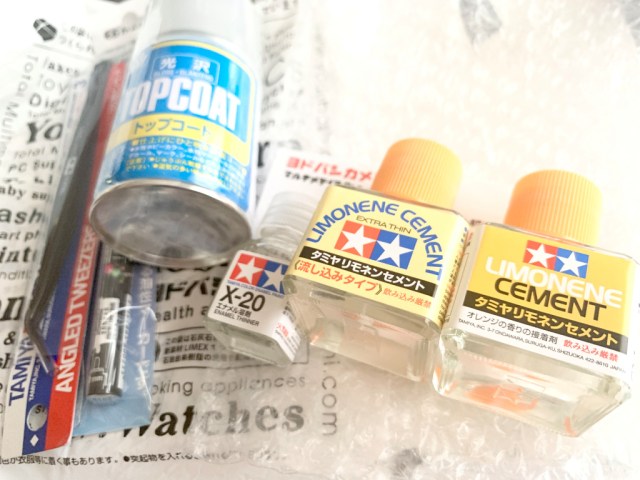
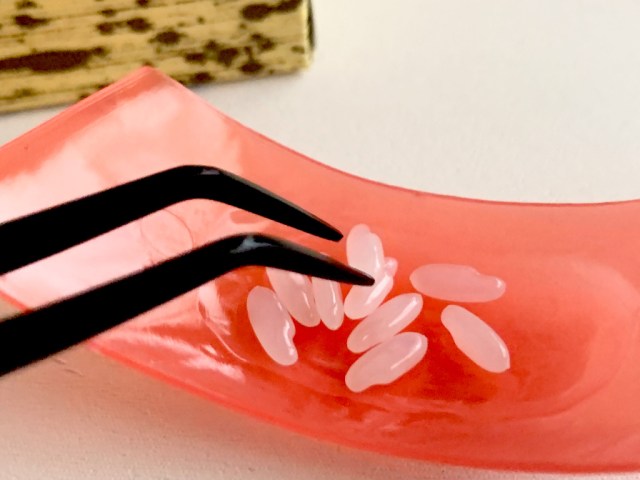
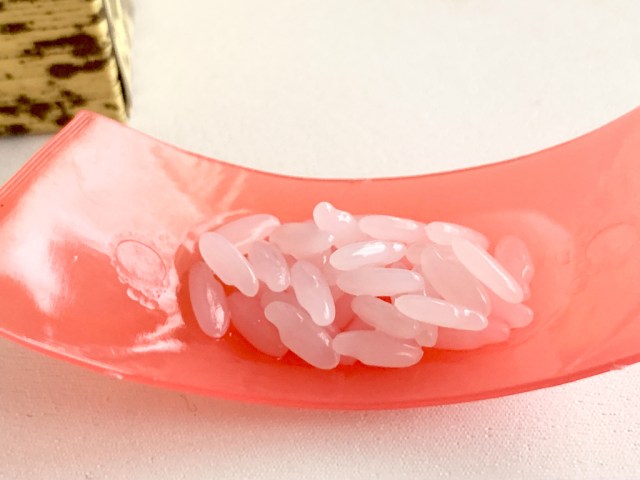
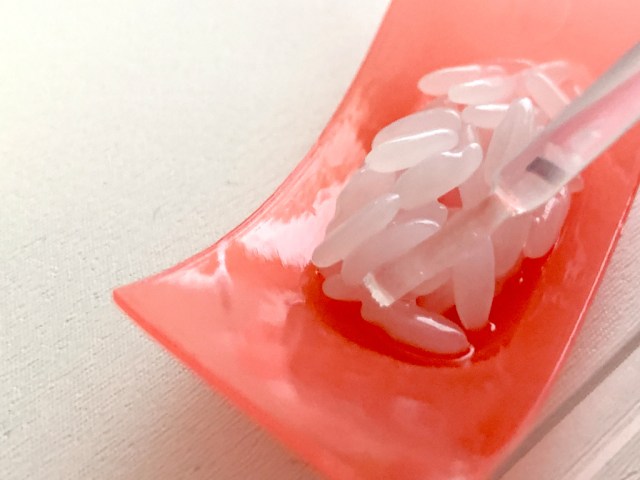
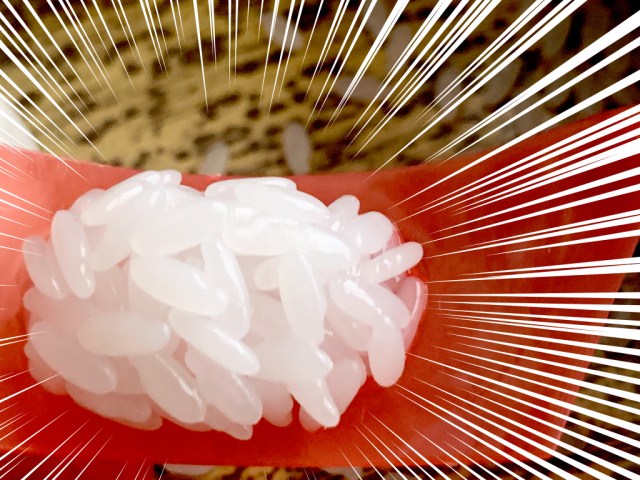
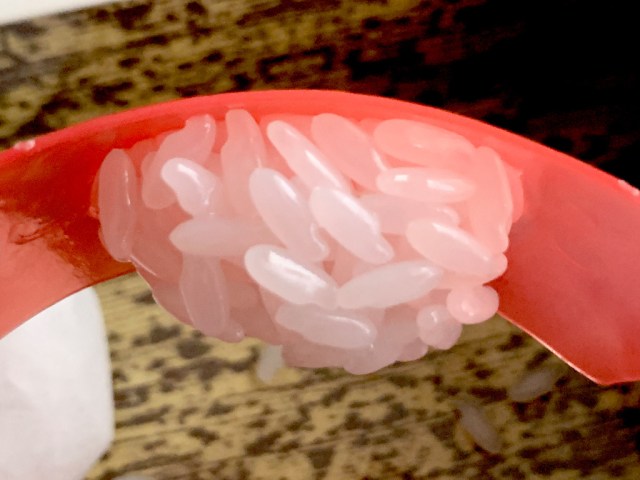
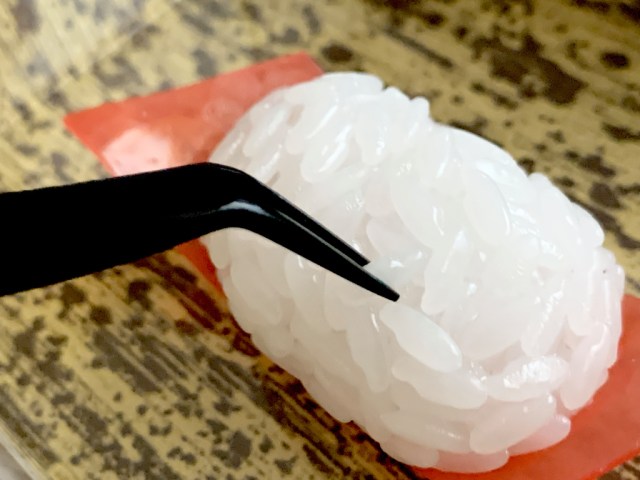
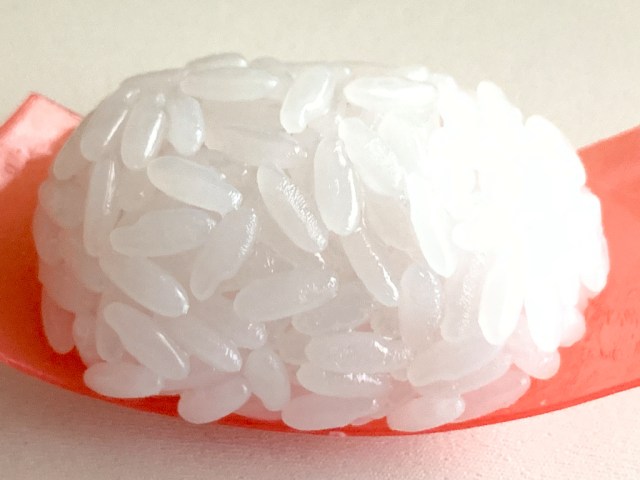
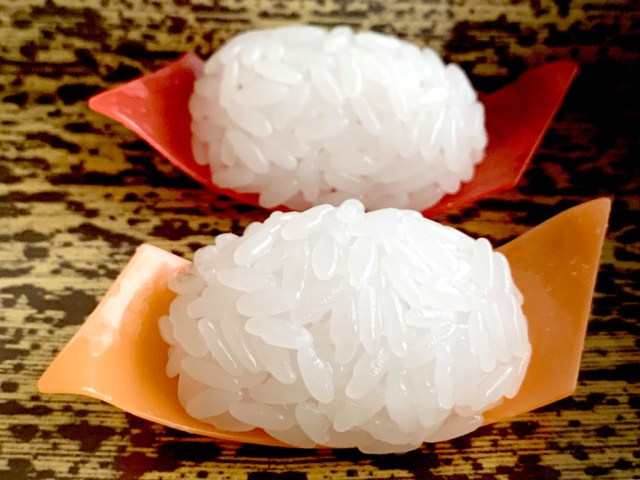
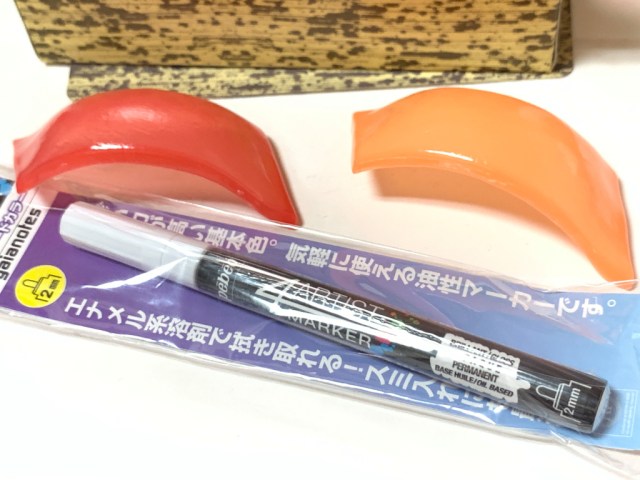
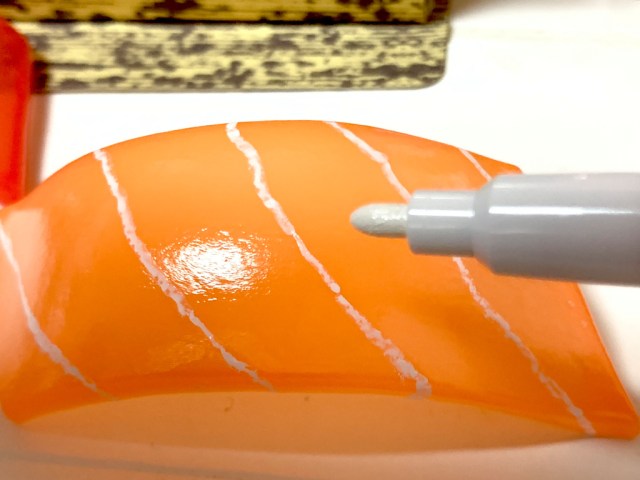
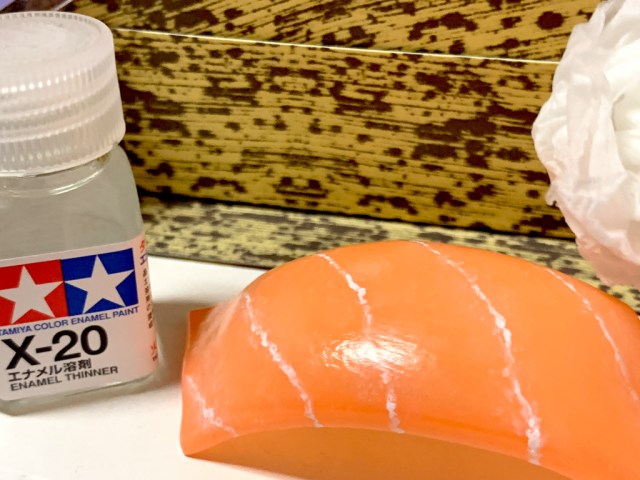
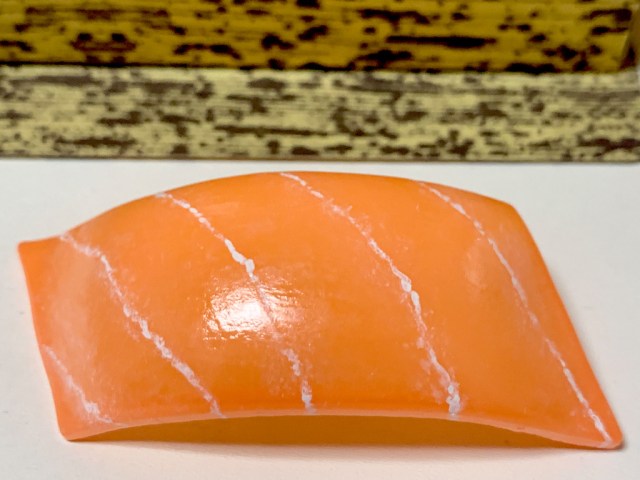
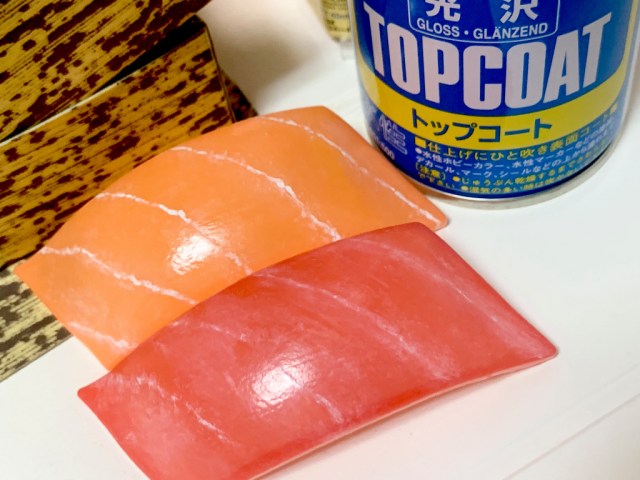
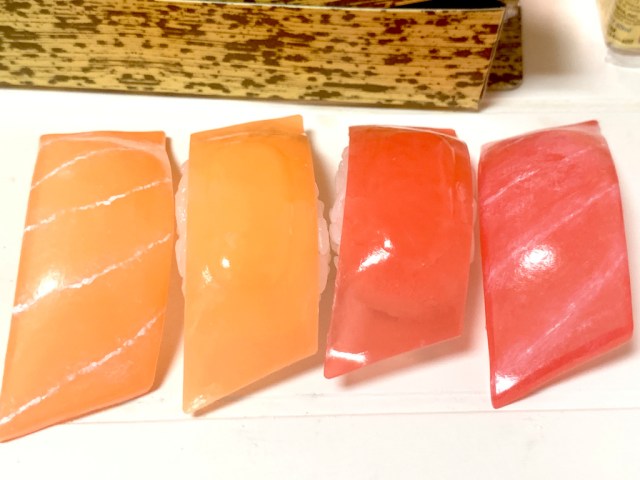
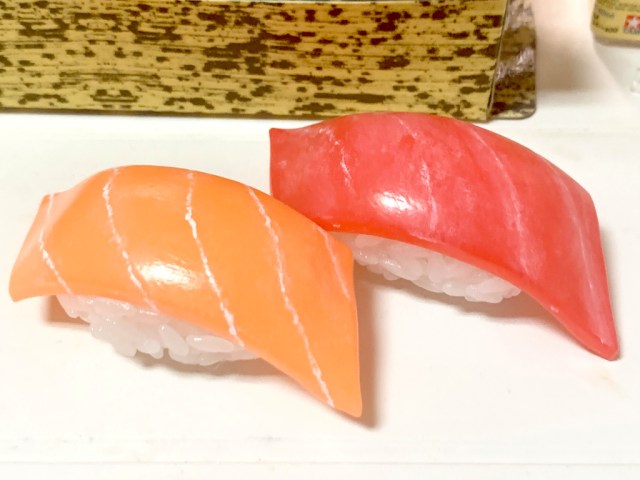
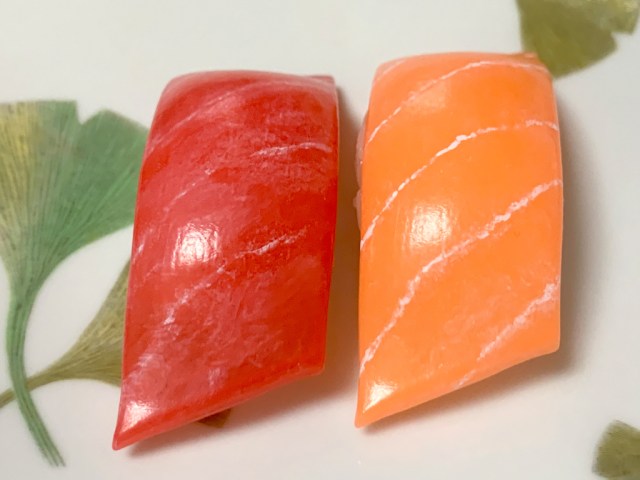
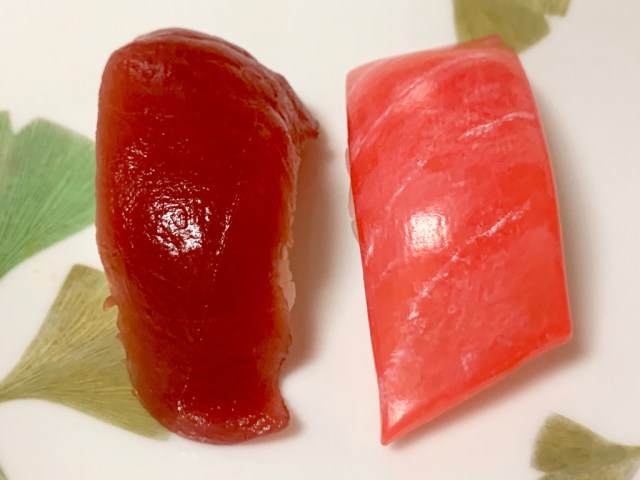
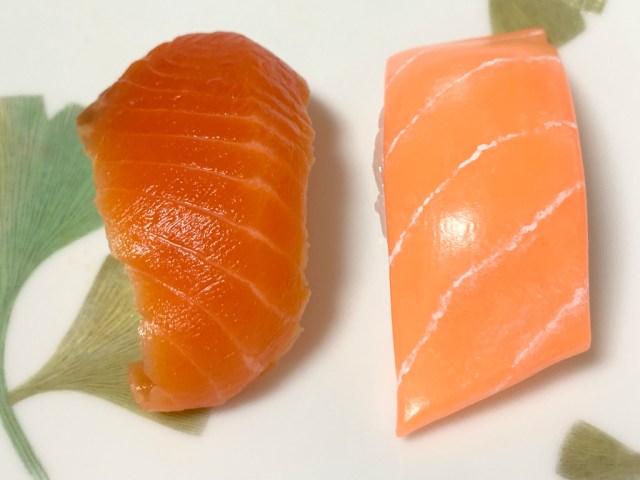
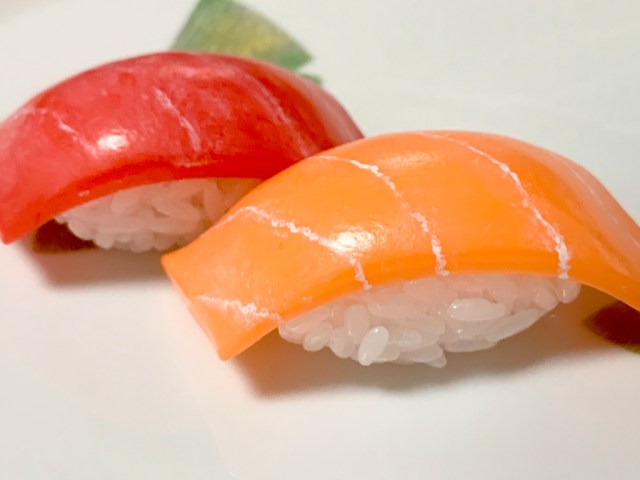
 This crazy plastic sushi model has 366 pieces, which actually makes a lot of sense【Photos】
This crazy plastic sushi model has 366 pieces, which actually makes a lot of sense【Photos】 Gluttony has no limits with Costco fried chicken larger than our face【SoraKitchen】
Gluttony has no limits with Costco fried chicken larger than our face【SoraKitchen】 We use makeup from Japanese kids’ anime Tropical-Rouge! PreCure on our adult faces【Photos】
We use makeup from Japanese kids’ anime Tropical-Rouge! PreCure on our adult faces【Photos】 Watching Akira for the first time ever – Our contrary reporter gets her mind blown
Watching Akira for the first time ever – Our contrary reporter gets her mind blown We take a trip to Japan’s Lovot robot cafe, cuddle with a bot and learn how to love
We take a trip to Japan’s Lovot robot cafe, cuddle with a bot and learn how to love McDonald’s Japan’s new pancake pie is a taste sensation
McDonald’s Japan’s new pancake pie is a taste sensation Studio Ghibli unveils new goods that tip the hat to The Cat Returns
Studio Ghibli unveils new goods that tip the hat to The Cat Returns One of Japan’s oldest castles now lets travelers spend night on the grounds, drink in its keep
One of Japan’s oldest castles now lets travelers spend night on the grounds, drink in its keep Orange Juice Crisis ’24 – Japan’s OJ supplies drying up
Orange Juice Crisis ’24 – Japan’s OJ supplies drying up Starbucks at Shibuya Scramble Crossing reopens, but is it really bigger and better than before?
Starbucks at Shibuya Scramble Crossing reopens, but is it really bigger and better than before? Two things to do, and two things not to do, when leaving a traditional Japanese inn
Two things to do, and two things not to do, when leaving a traditional Japanese inn Foreigner’s request for help in Tokyo makes us sad for the state of society
Foreigner’s request for help in Tokyo makes us sad for the state of society Studio Ghibli unveils massive T-shirt collection featuring top anime movie characters
Studio Ghibli unveils massive T-shirt collection featuring top anime movie characters Foreign traveler caught trying to sneak into Japan by climbing down rope from cruise ship
Foreign traveler caught trying to sneak into Japan by climbing down rope from cruise ship Bad tourist manners at Mt Fuji Lawson photo spot prompts Japanese town to block view with screens
Bad tourist manners at Mt Fuji Lawson photo spot prompts Japanese town to block view with screens Red light district sushi restaurant in Tokyo shows us just how wrong we were about it
Red light district sushi restaurant in Tokyo shows us just how wrong we were about it Japanese city loses residents’ personal data, which was on paper being transported on a windy day
Japanese city loses residents’ personal data, which was on paper being transported on a windy day McDonald’s new Happy Meals offer up cute and practical Sanrio lifestyle goods
McDonald’s new Happy Meals offer up cute and practical Sanrio lifestyle goods Japanese ramen restaurants under pressure from new yen banknotes
Japanese ramen restaurants under pressure from new yen banknotes Ghibli Park now selling “Grilled Frogs” from food cart in Valley of Witches
Ghibli Park now selling “Grilled Frogs” from food cart in Valley of Witches New definition of “Japanese whiskey” goes into effect to prevent fakes from fooling overseas buyers
New definition of “Japanese whiskey” goes into effect to prevent fakes from fooling overseas buyers Our Japanese reporter visits Costco in the U.S., finds super American and very Japanese things
Our Japanese reporter visits Costco in the U.S., finds super American and very Japanese things All-you-can-drink Starbucks and amazing views part of Tokyo’s new 170 meter-high sky lounge
All-you-can-drink Starbucks and amazing views part of Tokyo’s new 170 meter-high sky lounge More foreign tourists than ever before in history visited Japan last month
More foreign tourists than ever before in history visited Japan last month New Pokémon cakes let you eat your way through Pikachu and all the Eevee evolutions
New Pokémon cakes let you eat your way through Pikachu and all the Eevee evolutions Disney princesses get official manga makeovers for Manga Princess Cafe opening in Tokyo
Disney princesses get official manga makeovers for Manga Princess Cafe opening in Tokyo French Fries Bread in Tokyo’s Shibuya becomes a hit on social media
French Fries Bread in Tokyo’s Shibuya becomes a hit on social media Sales of Japan’s most convenient train ticket/shopping payment cards suspended indefinitely
Sales of Japan’s most convenient train ticket/shopping payment cards suspended indefinitely Sold-out Studio Ghibli desktop humidifiers are back so Totoro can help you through the dry season
Sold-out Studio Ghibli desktop humidifiers are back so Totoro can help you through the dry season Japanese government to make first change to romanization spelling rules since the 1950s
Japanese government to make first change to romanization spelling rules since the 1950s Ghibli founders Toshio Suzuki and Hayao Miyazaki contribute to Japanese whisky Totoro label design
Ghibli founders Toshio Suzuki and Hayao Miyazaki contribute to Japanese whisky Totoro label design Doraemon found buried at sea as scene from 1993 anime becomes real life【Photos】
Doraemon found buried at sea as scene from 1993 anime becomes real life【Photos】 Tokyo’s most famous Starbucks is closed
Tokyo’s most famous Starbucks is closed One Piece characters’ nationalities revealed, but fans have mixed opinions
One Piece characters’ nationalities revealed, but fans have mixed opinions We asked a Uniqlo employee what four things we should buy and their suggestions didn’t disappoint
We asked a Uniqlo employee what four things we should buy and their suggestions didn’t disappoint We tried a gourmet chocolate bento box worth 2,700 yen, and every bite was worth it
We tried a gourmet chocolate bento box worth 2,700 yen, and every bite was worth it Weirdest plastic model ever – A 1:1-scale Cup Noodle, including the ramen and toppings【Photos】
Weirdest plastic model ever – A 1:1-scale Cup Noodle, including the ramen and toppings【Photos】 Artist Takashi Murakami immortalises heckled Tokyo assembleywoman in dot-art portraits
Artist Takashi Murakami immortalises heckled Tokyo assembleywoman in dot-art portraits Onigiri jewellery from Japan lets you wear your love of Japanese food on your fingers
Onigiri jewellery from Japan lets you wear your love of Japanese food on your fingers Sushi soup? We try Japan’s latest easy-to-make, so-crazy-it-might-work meal【Taste test】
Sushi soup? We try Japan’s latest easy-to-make, so-crazy-it-might-work meal【Taste test】 “Drinkable pistachios”: A nutty matcha lover’s dream beverage
“Drinkable pistachios”: A nutty matcha lover’s dream beverage Here’s the reason why your expensive ikura sushi often comes with some cheap cucumber slices
Here’s the reason why your expensive ikura sushi often comes with some cheap cucumber slices Asakusa luxury – the best matsutake soba we’ve ever had at a price that can’t be beat
Asakusa luxury – the best matsutake soba we’ve ever had at a price that can’t be beat Here’s what a 10,000-yen Sushi Cake from Japan looks like
Here’s what a 10,000-yen Sushi Cake from Japan looks like Insanely detailed 900-plus-piece Japanese model kit is…a 1:1-scale sesame dumpling【Photos】
Insanely detailed 900-plus-piece Japanese model kit is…a 1:1-scale sesame dumpling【Photos】 These beautiful pieces of sushi aren’t actually sushi
These beautiful pieces of sushi aren’t actually sushi Less than half of Japanese people OK with bare hand-pressed rice balls, survey says, but why?
Less than half of Japanese people OK with bare hand-pressed rice balls, survey says, but why? $2.34!? Cheapest bullet-train ride in Japan lasts 3 minutes, but memories are forever【Photos】
$2.34!? Cheapest bullet-train ride in Japan lasts 3 minutes, but memories are forever【Photos】 Increasing number of women leave rice behind at revolving sushi train restaurants in Japan
Increasing number of women leave rice behind at revolving sushi train restaurants in Japan Sake-brewing company produces one-chug wonder: boozy boba in a bottle【Taste test】
Sake-brewing company produces one-chug wonder: boozy boba in a bottle【Taste test】 Can you make a proper ehomaki lucky sushi roll with Daiso equipment?
Can you make a proper ehomaki lucky sushi roll with Daiso equipment?
Leave a Reply